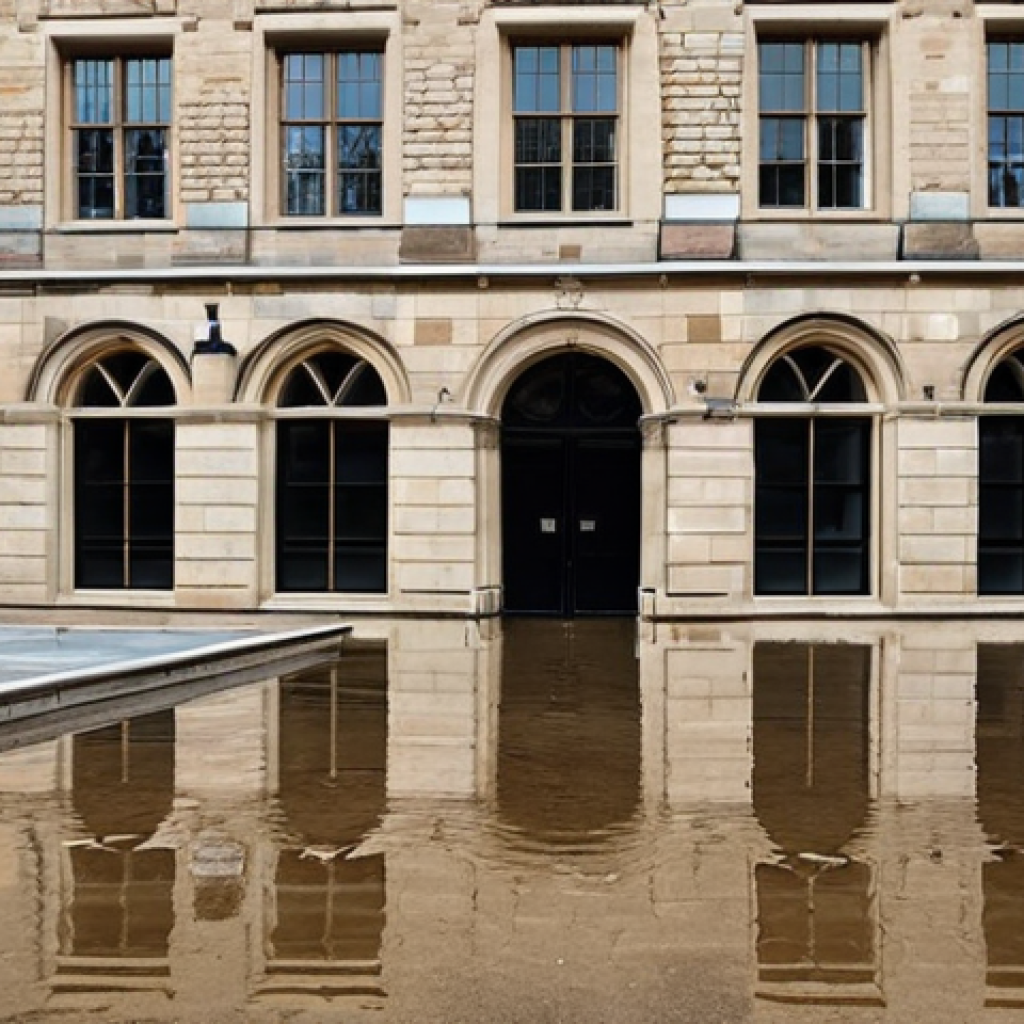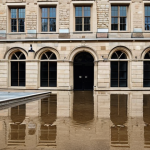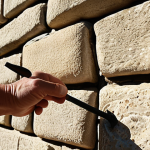Cultural heritage restoration is a deeply rewarding field, yet it presents a unique set of challenges. From sourcing historically accurate materials to grappling with the unpredictable behavior of aged structures, the path to preserving our past is often fraught with unexpected hurdles.
I remember one particularly tricky situation during a stone consolidation project where the newly applied consolidant reacted adversely with the existing patina, causing unsightly discoloration.
It was a stressful moment, requiring quick thinking and a revised approach. And this kind of situation is not uncommon in the cultural heritage field.
But don’t worry! Let’s delve deeper into how to overcome these common pitfalls.
Alright, let’s dive into navigating the intricate world of cultural heritage restoration.
Tackling Unexpected Material Compatibility Issues

Material compatibility – it’s the silent saboteur of many a restoration project. You meticulously research historical recipes, source the supposed perfect adhesive, and then BAM!
It reacts in ways you never anticipated.
Identifying Potential Conflicts Early On
One trick I’ve learned is to create small test patches on inconspicuous areas. Apply your chosen materials and monitor them closely over several weeks, even exposing them to simulated environmental conditions (humidity, UV light).
This can flag incompatibilities before they ruin a larger section.
The Art of Reversibility
Always, always, *always* prioritize reversible treatments. The ideal scenario is that any material you introduce can be safely removed without damaging the original fabric.
Natural resins and lime-based mortars often fit the bill, offering good adhesion while remaining relatively easy to undo if problems arise.
Building a Network of Expert Consultants
Don’t be an island! Cultivate relationships with material scientists, conservators specializing in different media, and even experienced tradespeople.
Sometimes, a fresh pair of eyes can spot potential issues you might have overlooked. I had a problem using certain epoxy. The experienced tradespeople said to use a specific product and I got amazing results.
Navigating the Labyrinth of Historic Building Codes
Oh, building codes. A necessary evil, perhaps, but applying modern regulations to centuries-old structures can feel like trying to fit a square peg in a round hole.
Documentation is Your Best Friend
Thorough documentation of the building’s original construction methods, materials, and any previous alterations is critical. This provides a solid foundation for justifying deviations from modern codes to local authorities.
Engaging in Open Communication with Authorities
Don’t treat building inspectors as adversaries. Approach them as partners in preservation. Present your case clearly, explaining why strict adherence to certain codes would compromise the building’s historical integrity.
Be prepared to offer alternative solutions that meet safety requirements without sacrificing authenticity.
Learning to Embrace the Grey Areas
Many historic building codes have built-in flexibility to accommodate unique situations. Become familiar with the specific provisions that allow for deviations, and be prepared to argue for their application based on the building’s historical significance and the proposed restoration techniques.
Finding the Right Balance Between Preservation and Accessibility
Making historic sites accessible to everyone is a noble goal, but it can be tricky to achieve without significantly altering the building’s original fabric.
Prioritizing Universal Design Principles
Incorporate universal design principles whenever possible. This means considering accessibility from the outset, rather than tacking on solutions as an afterthought.
Simple ramps, strategically placed handrails, and tactile signage can often be integrated seamlessly into the historic environment.
Innovative Solutions for Challenging Spaces
Sometimes, creative thinking is required. Consider using ramps, stairlifts, and elevators. Ensure the solutions comply with heritage guidelines, blending seamlessly with the original architecture.
Leveraging Technology for Remote Access
Virtual tours, 3D models, and online archives can provide access to historic sites for those who are unable to visit in person. This can be a particularly valuable tool for reaching audiences with mobility limitations or those living far away.
The Ethical Tightrope Walk: Authenticity vs. Interpretation
Where do you draw the line between preserving a building’s original fabric and interpreting it for modern audiences? It’s a question that plagues every restoration project.
Rigorous Research and Documentation
Again, thorough research is key. Understand the building’s original purpose, its evolution over time, and the significance of its various features. This knowledge will inform your decisions about which aspects to prioritize for preservation.
Minimal Intervention: A Guiding Principle
Adopt a “do no harm” approach. Only intervene when necessary to stabilize the structure or address critical conservation needs. Avoid unnecessary alterations that could obscure the building’s historical character.
Transparent Interpretation: Telling the Whole Story
Acknowledge any compromises or alterations that have been made during the restoration process. Explain the rationale behind these decisions and be upfront about any areas where the building has been reinterpreted for modern use.
Managing the Ever-Present Budgetary Constraints
Let’s face it: cultural heritage restoration is rarely cheap. Securing adequate funding can be a constant struggle.
Creative Fundraising Strategies
Explore a variety of funding sources, including grants, private donations, sponsorships, and even crowdfunding. Get creative with your fundraising efforts and be prepared to demonstrate the project’s value to potential donors.
Prioritization and Phased Implementation
Break the project down into manageable phases, prioritizing the most critical repairs and conservation treatments. This allows you to tackle the project incrementally, as funding becomes available.
Value Engineering: Finding Cost-Effective Solutions
Look for ways to reduce costs without compromising the quality of the restoration. This might involve using alternative materials, streamlining construction processes, or seeking pro bono services from skilled professionals.
Here’s a little table to summarize some of these common restoration challenges:
| Challenge | Potential Solutions | Tips |
|---|---|---|
| Material Incompatibility | Testing, Reversible Treatments | Consult experts, prioritize materials that can be removed. |
| Historic Building Codes | Documentation, Communication | Document original conditions, be prepared for flexibility. |
| Accessibility | Universal Design, Creative Solutions | Ramps, Virtual Tours, consider people with disabilities. |
| Authenticity vs. Interpretation | Research, Minimal Intervention | Avoid unnecessary changes. |
| Budget | Fundraising, Phased Implementation | Value engineering, seek cost effective solution |
Weather Extremes Impacting Restoration Work
Climate change is no longer a distant threat; it’s actively reshaping the way we approach conservation. Increased frequency of extreme weather events, such as floods, droughts, and heat waves, can accelerate the deterioration of historic structures and complicate restoration efforts.
Flood Mitigation Strategies
For sites located in flood-prone areas, implementing flood mitigation strategies is crucial. This might involve raising the building’s foundation, installing flood barriers, or improving drainage systems.
Heat-Resistant Materials
In regions experiencing increasingly intense heat waves, using heat-resistant materials can help to protect historic structures from damage. Consider using reflective roofing materials, installing ventilation systems, or implementing shading strategies to reduce the building’s exposure to direct sunlight.
Drought-Tolerant Landscaping
Droughts can also pose a threat to historic landscapes. Consider replacing water-intensive plantings with drought-tolerant native species. Implementing water-wise irrigation techniques can also help to conserve water and protect valuable plant collections.
Navigating the multifaceted challenges of cultural heritage restoration requires a blend of scientific understanding, artistic sensibility, and ethical awareness.
While daunting, the preservation of our shared history is a deeply rewarding endeavor that benefits present and future generations. With meticulous planning, open communication, and a commitment to authenticity, we can ensure these treasures endure for centuries to come.
Wrapping Up
Restoring cultural heritage is like piecing together a giant, delicate puzzle. It demands patience, adaptability, and a profound respect for the past. While the challenges are numerous – from navigating material incompatibilities to balancing preservation with accessibility – the rewards of breathing new life into these historical treasures are immeasurable.
By embracing innovative solutions, fostering collaboration, and prioritizing ethical considerations, we can ensure that our cultural heritage continues to inspire and educate for generations to come. Remember, every brushstroke, every carefully chosen material, and every thoughtful decision contributes to the enduring legacy of these irreplaceable sites.
Handy Info to Keep in Your Back Pocket
1. Know Your Materials: Before starting any restoration work, thoroughly research the original materials used in the structure. Understanding their properties and potential incompatibilities is crucial for preventing future damage.
2. Build a Network: Don’t hesitate to reach out to experts in various fields, such as material science, conservation, and historic preservation. Their expertise can provide invaluable guidance throughout the restoration process. Local architectural firms can be a great place to start.
3. Document Everything: Keep detailed records of every step of the restoration process, including photographs, drawings, and written descriptions. This documentation will be invaluable for future research and maintenance.
4. Consider Future Climate: Factor in the impacts of climate change when planning restoration projects. This may involve implementing flood mitigation strategies, using heat-resistant materials, or planting drought-tolerant landscaping. Consider consulting with a sustainability expert.
5. Stay Updated: Building codes and preservation guidelines are constantly evolving. Stay informed about the latest regulations and best practices to ensure that your restoration work meets the highest standards.
Key Takeaways
– Material compatibility is paramount; test new materials carefully.
– Open communication with local authorities is essential for navigating historic building codes.
– Balancing preservation and accessibility requires innovative solutions.
– Authenticity should be a guiding principle, with minimal intervention.
– Creative fundraising and phased implementation can help manage budgetary constraints.
– Climate change impacts must be considered in restoration planning.
Frequently Asked Questions (FAQ) 📖
Q: What’s the biggest headache when trying to find historically accurate materials for a restoration project?
A: Oh man, sourcing materials is a total scavenger hunt sometimes! Honestly, the biggest issue is often finding something that actually matches the original in both composition and appearance.
You can’t just waltz into Home Depot and grab whatever, right? It’s not only about the raw material itself, but also how it was processed back in the day.
Think about the difference between a modern brick and a hand-fired brick from the 18th century – HUGE difference in color, texture, and even how it breathes.
I’ve spent countless hours researching historical suppliers and sometimes even had to commission artisans to recreate materials using traditional techniques.
It’s a real commitment. Plus, you have to consider the environmental impact; you can’t just start tearing down old buildings to get reclaimed materials, even if they are perfect!
Q: What’s the most unexpected thing you’ve learned about working with old structures?
A: That they have a mind of their own, plain and simple! You can do all the surveys and analyses you want, but old buildings will always surprise you. I was working on a church restoration once and we discovered a completely undocumented chapel hidden behind a wall.
Apparently, it had been sealed off centuries ago. It’s always something. But seriously, the movement and shifting of materials over time is incredibly unpredictable.
A wall that looks solid might be on the verge of collapse. A beam that appears strong might be riddled with rot. You have to be incredibly observant, adaptable, and always prepared for the unexpected.
It’s like dealing with a very old, very stubborn person – you’ve got to respect their history and tread carefully!
Q: What advice would you give to someone just starting out in cultural heritage restoration?
A: Buckle up, it’s a wild ride! Seriously, it’s an incredibly rewarding field, but it requires a ton of patience, dedication, and a genuine love for history.
My top piece of advice? Learn from everyone you can. Talk to seasoned conservators, architects, historians, even the local community.
Each person has a unique perspective and valuable knowledge to share. And don’t be afraid to get your hands dirty! Actually doing the work is the best way to understand the materials and techniques involved.
Plus, develop a thick skin. Mistakes happen, things go wrong, and you’ll need to learn from them. Finally, never stop learning.
New research, new technologies, and new approaches are constantly emerging. Stay curious and keep exploring! It’s not a job, it’s a calling, and it’s totally worth it.
📚 References
Wikipedia Encyclopedia




